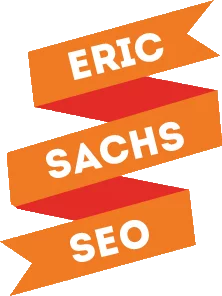Learning about backlink hotspots can help you expand on your content strategy to support content. It’s something that’s existed for a while, but we don’t hear many people talking about.
What is a Link Hotspot?
Link hotspots are pages on a site that gets links in larger volumes and consistent rates than others. For most websites, this is the homepage, but in some cases, it can also be a resource page. On the majority of websites, the difference between the home page and the next largest page on their website isn’t typically proportionate.
The good thing is that most successful websites have more than one hotspot.
Comparing Hotspots and Assets
Assets are linkable, and not all linkable assets are considered hotspots. However, all hotspots are linkable assets.
For instance, an infographic is likely to earn you some links when you promote it – and from time to time it will gain links without promotion after the fact. A hotspot on the other hand will continue to gain links until it becomes a link hotspot on your website.
Use a search tool like Ahrefs or Serpstat to see which pages on your site have the most links, and you’ll see where you have potential hotspots building.
How Hotspots are Formed
Ahrefs published a study about the number of new backlinks top ranking pages get over time. What the study tells us is that pages that rank well will continue to get links, and this is something that needs to be considered as we discuss building our own and how they benefit us.
Some link hotspots will form simply because they rank well. If how long they rank well has a direct affect on the number of links they acquire, it’s important to factor that in. This can be a good and bad thing when trying to build your own link hotspots because not all ranking pages are hotspots, and not all hotspots will rank. Not all link hotspots are organic, and not all of them are supporting content. That’s why it’s best to build one that can also rank.
Supporting content can rank so that won’t disqualify a page from being supporting. There are some people out there who say that supporting content can even have commercial intent. Though in general, it seems informational content seems to provide the best link spots.
Though they don’t always rank, they do gain links with extreme easy when it comes to doing certain types of outreach. Because of this, they are more likely to rank and as such are more likely to do well when you continue to build backlinks to the hotspot.
Building Your Own Hotspot
It’s easier than you may think to build your own hotspot. The key is to provide value and accuracy because people want to make sure they are linking to quality content that supports what they are talking about. They want to provide their audience with a good source to go for more information. Your content must be comprehensive, and friendly for the user experience.
Common Types of Hotspots and Examples
Some of the most widely used hotspots are:
- Fact pages/resource pages
- Calculators: Use a tool like Calconic to create your own free calculator from a number of templates, such as: car loan, price calculators, expense calculators, BMI calculators, commission calculators, and more.
- Deals/Coupons pages
If you want to build one on your own site, the simplest way to do this is to conduct some research – but instead of keyword research, focus your efforts on topic research with a tool like Ubersuggest. There you can search in the Content Ideas section, and use the results to come up with ideas for hotspots.
After you’ve created the hotspot, it’s time to promote it. Share it on social media. Use influencers to push the message further on social. Run an outreach campaign at some point, and try guest blogging.
If you see that your outreach efforts fall fault and you cannot get any social virality to the content, then it’s safe to say it’s not a link hotspot.
How Hotspots Help Your SEO Efforts
Each new link to your site will add more trust and authority to your site. But beyond that, you’re getting a new entry point for link juice. Even more importantly, designing and using link hotspots as supporting pages on your site ensures that the most link juice will go to contextual links.
Hotspots work two-fold because when you build links to these pages, it’s because you’re using them as supporting content for the rest of your site. Then, it’s typical to link out to at least five other key pages on the site, and the relevance, combined with the power of these pages helps rank the more commercial pages on my site. This is all done without risking using exact match anchor text from external domains, which is a huge risk.
The great thing about this approach is that there are a number of ways you can implement it, and you’re ultimately already familiar with the strategy. By focusing the supporting content that naturally forms on your websites – you’re on your way. Websites are nothing more than information ecosystems anyway.
